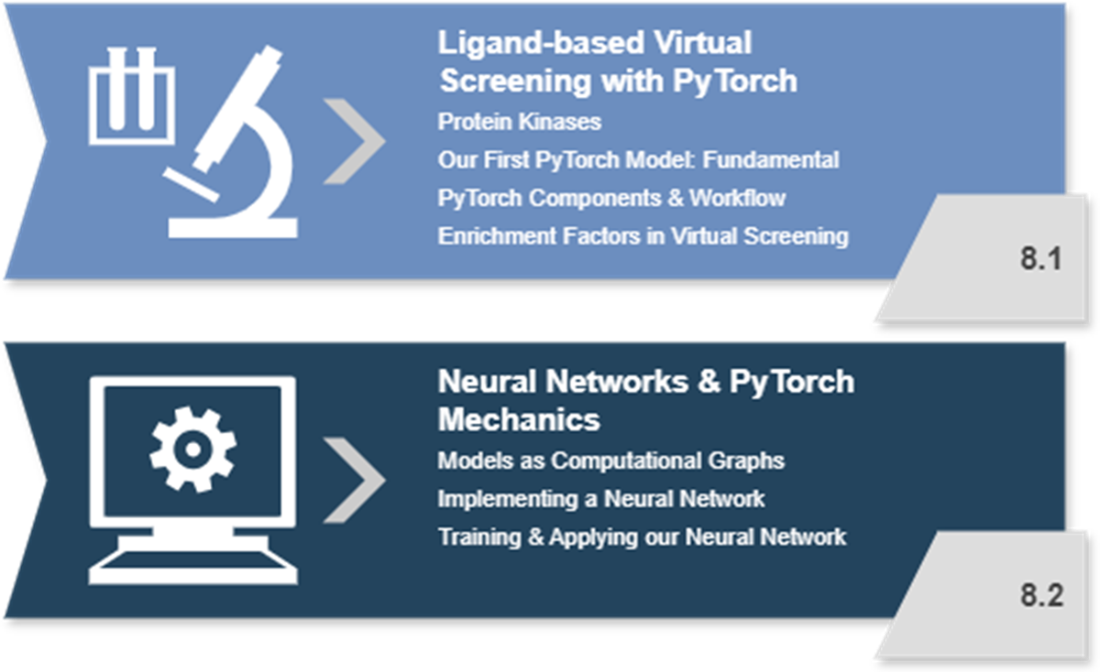chapter eight
8 Introduction to Deep Learning
This chapter covers
- The kinase protein family from perspectives of both ligand- and structure-based virtual screening (VS)
- An introduction to PyTorch for constructing, training, and evaluating neural networks
- Theory underlying neural networks and common ways to improve their performance
This chapter marks a segway across several domains. In the first half of the book, we covered a sizeable swath of machine learning methods and how to apply them, typically using Scikit-Learn, to problems in drug discovery with a focus on ligand-based applications. In the second half, we will transition to advanced methods that underly deep learning. To apply these methods, we’ll expand our tool usage to PyTorch, a well-known and popular deep learning framework. Lastly, we’ll increase the scope of our projects to cover structure-based applications, e.g., how a ligand interacts with a known protein structure.
Figure 8.1 illustrates our roadmap for this chapter.
Figure 8.1 Roadmap for this chapter, starting with the high-level implementation of a PyTorch model and followed by detailed coverage of the underlying mechanics that govern our implementation.
